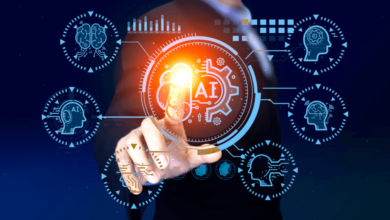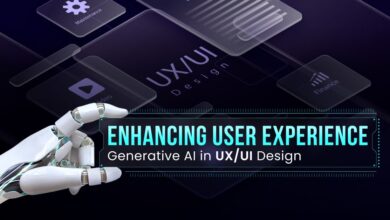
Equity in education, while a pivotal goal, remains a challenging pursuit. Disadvantaged students often encounter significant obstacles in their academic journey, especially in writing. However, AI has emerged as a beacon of hope, promising to make academic writing more accessible and achievable.
The use of Large Language Models (LLMs) in the classroom is gaining attention for its potential to transform educational practices. Stanford Graduate School of Education’s report on technology use in education underscores the significant potential of technology, including AI and LLMs, to close achievement gaps and enhance learning, especially among students at risk of dropping out. (Darling-Hammond & Goldman, 2014).
AI’s Potential in Academic Writing
AI holds the potential to dismantle barriers in academic writing for disadvantaged students. This potential manifests in several ways, including personalized learning experiences, enhancement of language proficiency, support for students with learning disabilities, facilitation of research and organization, and encouragement of collaboration and feedback. Creative and exploratory use of technology, coupled with teacher guidance, can reduce the digital divide and foster a more engaging and inclusive learning environment (Darling-Hammond & Goldman, 2014).
Personalized Learning Experiences
AI’s capacity to offer personalized learning experiences is one of its most significant benefits. For instance, “ReadToMe,” a software implemented in Indian schools, uses AI to provide tailored reading assistance. By adapting to each student’s pace, it has notably improved academic performance, especially among students from diverse linguistic backgrounds.
Enhancing Language Proficiency
AI tools like “Duolingo” have been instrumental in enhancing language proficiency for non-native English speakers. The integration of Duolingo with traditional teaching methods has led to rapid improvements in grammar and vocabulary among ESL (English as a Second Language) students, thereby enabling them to articulate their thoughts more coherently in academic writing.
Learning Disabilities
Students with dyslexia, dysgraphia, and other learning disabilities often find writing to be a frustrating task. AI can offer a lifeline. Speech-to-text technology, for example, allows students to articulate their thoughts without the barrier of typing, while AI-driven reading assistants can help decode complex texts, making research materials more accessible.
Ghotit, a spell checker designed for individuals with dyslexia and dysgraphia, enables these students to express their ideas without the hindrance of typing, making academic writing more accessible. These technologies empower students with learning disabilities to engage with the writing process on their terms, reducing frustration and enhancing their ability to communicate ideas (Myer et al., 2024)
Facilitating Research and Organization
AI tools such as “Zotero” simplify the overwhelming nature of the research process by automating the gathering, organizing, and citing of sources. This allows students to focus on idea development, making academic writing less daunting. The research process can be overwhelming, particularly for students who may not have access to traditional academic resources. AI can simplify this process by swiftly sorting through vast amounts of information to find relevant sources, summarizing articles, and even generating bibliographies. Moreover, AI can assist in organizing these materials, suggesting outlines for essays or papers that ensure a coherent argument is presented. This support can save students time and energy, allowing them to focus on developing their ideas rather than becoming bogged down in logistics.
Encouraging Collaboration and Feedback
AI promotes a collaborative learning environment through platforms like “Peergrade,” which facilitates peer review outside traditional classroom settings. This system enables students to give and receive constructive feedback, enhancing their writing skills and boosting their confidence.
Responsible Use
While AI presents a game-changer, responsible use remains crucial. Students, especially might not fully grasp the potential risks. Educating them on data privacy empowers them to navigate this new world. This means understanding what data is collected, how it’s used, and with whom it’s shared. Just like learning good internet hygiene, students need to be mindful of the information they share with AI tools, minimizing personal details like names, addresses, or anything identifiable.
Additionally, fostering critical thinking allows them to analyze AI-generated information and avoid blindly accepting it as truth.
Addressing Bias in AI
AI holds tremendous promise for educational equity, it is critical to confront the potential for bias within these technologies. AI systems, reflecting the biases present in their training data, can lead to unfair or skewed feedback and recommendations. For instance, language models may inadvertently favor certain dialects or writing styles, disadvantaging students from diverse backgrounds. Therefore, it is imperative to address these biases to ensure the equitable application of AI in education.
Summary
The journey towards educational equity is complex and multifaceted, but AI offers hope with powerful tools to mitigate some of the disparities that disadvantaged students face in academic writing. By providing personalized support, enhancing language proficiency, accommodating learning disabilities, simplifying the research process, and fostering collaboration, AI can make academic writing a more inclusive and accessible endeavor.
As we continue to explore the potential of AI in education, it is crucial to ensure these technologies are implemented thoughtfully and ethically, with a steadfast commitment to leveling the playing field for all students. In doing so, we might move closer to a world where everyone has the opportunity to express their ideas and contribute to the academic discourse, regardless of their background or challenges. AI and LLMs hold significant potential to transform educational practices and bridge the achievement gap, particularly in academic writing. However, the potential biases within AI systems must be addressed to ensure their equitable application in education.





